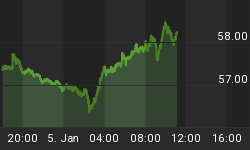It is difficult to predict how the market will react to what is expected to be a favorable German vote Thursday approving the July 21 changes to the European bailout plan. However the early read as of 12:50 p.m. on Wednesday leans bearish. If we get a move higher in stocks after the German vote, it may prove to be relatively short-lived.
The objectives in Europe are similar to the Fed's objectives in the United States in terms of trying to hold off deflationary forces, which make debts more burdensome. The Fed and European leaders are trying to create positive inflation and spark some type of economic recovery. Just as we looked at inflation-friendly assets to forecast a probable disappointment to the Fed's Operation Twist announcement, the performance of inflation-protection assets on Wednesday is leaning decidedly toward deflationary and weak economic outcomes (see table below).
Would silver (SLV) be down 5.0% if market participants thought the Fed and Europeans could inflate away their debt? Would metals and mining stocks (XME) be down 3.70% if the vote in Germany was expected to clear a path for favorable economic outcomes? Obviously, the important thing is to see how the positions close on Wednesday (figures below are intraday). With high volatility, they could easily finish the day well into green territory.

Let's look at the other end of the spectrum - a favorable reaction to Thursday's vote in Germany. The video below explores how high the S&P 500 could reasonably tread before running into possible areas of resistance. While we do not believe it is a highly probable outcome, our reasonable bear market upside target of 1,260, published on August 12, is still valid.
After you click play, use the button in the lower-right corner of the video player to view in full-screen mode. Hit Esc to exit full-screen mode.


The current trading range in stocks has been frustrating for bulls and bears alike, especially if you consider yourself to be an investor, rather than a trader. We still believe the ETF table (below) and analysis we posted on September 11 provide a roadmap and way to monitor the battle between inflationary forces and deflationary forces. We also believe the odds heavily favor deflationary outcomes in the coming months, meaning assets such as bonds (TLT), shorts (SH), and the U.S. dollar (UPP) will remain on our watch lists and most likely in our portfolios.

Since we originally posted the table above, the silver ETF (SLV) dropped from 40.52 to a low of 27.41, which is a loss of 32%. A decline of that magnitude in silver does not bode well for future economic outcomes or stocks.
















